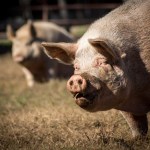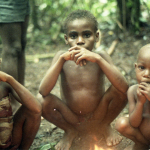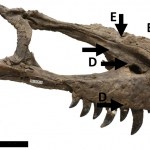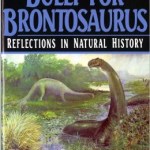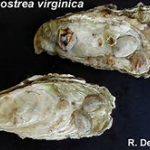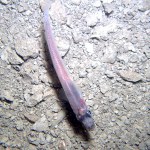Life Sciences
As researchers continue to document the intelligence and emotional acuity of animals, beasts begin to look more like brethren, and food more like friend. On Pharyngula, PZ Myers shares a decision by the U.S. Fish and Wildlife Service that gives chimpanzees used in research the same endangered status as their wild cousins. According to Science, "organizations that want to continue working with chimpanzees will have to document that the work enhances the survival of the species and benefits chimps in the wild." PZ writes, "I want to see more studies done on our closest relatives — but it has to…
Dr. Stan Lindstedt, Northern Arizona University Recipient of the 2013 August Krogh lectureship, American Physiological Society, Comparative and Evolutionary Physiology section
I am thrilled to see Dr. Stan Lindstedt's review article published in the April 2015 issue of American Journal of Physiology: Regulatory, Integrative and Comparative Physiology from his 2013 August Krogh lectureship at the annual Experimental Biology conference. My original blog from the lecture can be found here.
Dr. Lindstedt and co-author Dr. Niisa Nishikawa (Northern Arizona University), describe the importance…
A new paper is just out in The Lancet that examines the mortality risk of high and low ambient temperatures. The basic idea is that if it is either to hot or too cold, mortality may increase, possibly with the weather being a factor to augment the effects of other health problems, or as a direct result. The paper is methodologically reasonably well done but leads to conclusions that I think will be misinterpreted and misused. The paper implies that a shift to a warmer world would have lower mortality effects than a shift to a colder world might. Or, more significantly, that a shift to a…
If there's one fallacy that grips the brains of proponents of "natural healing," "holistic medicine," or, as the vast majority of it is, quackery, it's an appeal to nature. Basically, the idea that underlies the appeal to nature is a profane worship of nature as being, in essence, perfect, with anything humans do that is perceived as somehow being "unnatural" being viewed as, at the very least, inferior and at the very worst pure evil. We see it in the pseudoscientific stylings of cranks like The Food Babe, whose epic appeals to nature are legendary in their stupidity, particularly her…
In my previous post about Paul Nelson's weirdly ignorant view of nematode evolution, Kevin Anthoney made a prescient comment:
Remember that Nelson’s got this bizarre linear view of evolution which starts with a single cell creature, which evolves into a creature with a few cells, which evolves into one with a few more cells, and so on until you reach the 1031 cells in the nematode today. It wouldn’t surprise me at all if Nelson thought that the creature at the 150 cell stage in this process had to be like a modern nematode at the 150 cell stage of development.
The Discovery Institute has…
Dr. Frank van Breukelen, Comparative Physiologist, University of Nevada, Las Vegas
Dr. Frank van Breukelen is an Associate Professor in the School of Life Sciences at the University of Nevada, Las Vegas. He was invited to tell us about a new research project in this laboratory about some really cool mammals called tenrecs.
Here is the post:
In a recent post, Dr. Dolittle mentioned a talk that we gave at the Experimental Biology meetings in Boston. We discussed some of our recent data on tenrecs in a symposium about physiological plasticity- the ability of an animal to change its physiology…
The number one rule of the Taphonomy Club is don't talk about marks on bones ... without placing them in context. Many marks on bones could have multiple causes, such as putative cut marks caused by stone tools on animal bones found on early hominid sites. In that case, hard sharp stony objects in the ground can cause marks that are hard to tell apart from stone tool marks. But when you find almost all the possible stone tool marks in the exact locations they would be if a hominid was butchering or defleshing the animal, then you can assert that that butchery or defleshing with stone tools…
Much is being made of Brontosaurus. Brontosaurus is a genus name for a large dinosaur, known to watchers of “Land Before Time” as “Long-Necks.” That generic name dates to the 19th century, but in the early 20th century it was eliminated as a proper Linnaean term and replaced with Apatosaurus. This made us sad. Most people discover dinosaurs and learn all about a select handful of the iconic ones, including Brontosaurus, then later learn that Brontosaurs is a bogus name. And become sad.
But perhaps this sadness is all for naught, because a very recent study seems to require the resurrection…
Monday was a great day for comparative physiology at EB! I saw several highly notable posters and seminars that I would like to share with you:
Image of a deer mouse from www.calphotos.berkeley.edu
Catherine Ivy, graduate student at McMaster University compared deer mice that were raised at high altitudes versus those raised at lower altitudes and found that the ancestry of the animals was actually important in regulation of breathing and gas exchange in the lungs. Perhaps not surprisingly, acclimation to hypoxia also influenced both variables as well.
Image of a guinea pig from…
Congratulations to Mallory Ballinger, a graduate student from the University of Minnesota-Duluth, who is the 2015 recipient of the Dr. Dolittle Travel Award! The purpose of this award is to recognize an outstanding graduate student or postdoctoral fellow involved in comparative and evolutionary research and to provide assistance for them to attend the annual American Physiological Society Experimental Biology meeting. The application process includes the submission of a blog entry based on their research. She will be presenting her research at the upcoming Experimental Biology meeting in…
Greg Laden reports on a hominid fossil "recovered from the seabed near Taiwan" which reveals new levels of dental diversity among proto-humans and may qualify as a new species. Greg says the specimen known as Penghu "is yet another indicator that multiple different hominids lived on the Earth at the same time after the rise of Homo erectus." But why was it located underwater? In another example of what lies beneath, Dr. Dolittle marvels at "an unexpected find and very exciting moment for researchers;" the discovery of small fish and invertebrates thriving below 740 meters of ice near the…
A fish found swimming under 740 meters of ice. Credit: Reed Scherer (NIU)
An unexpected find and very exciting moment for researchers exploring what lies beneath 740 meters of ice in Antarctica...fish! An amazing find given the perpetual darkness and cold.
In an expedition sponsored by the National Science Foundation, scientists and ice drillers bored a hole through the Ross Ice Shelf near the coast of Antarctica, 850 kilometers from the closest place where there is sunlight. The area is known as the grounding zone, which is in essence a subglacial beach. According to a quote from glacial…
Let's continue with the discussion I started in yesterday's post.
We are considering whether it is reasonable to persist in believing in the reality of Adam and Eve given the findings of modern science. The problem is that the Bible seems clear that at the time of their creation, Adam and Eve were the only human beings on the planet. But genetic analyses contradict this, pointing instead to the conclusion that the human population has never dipped below two thousand, at an absolute minimum.
There are two broad strategies for avoiding this conflict: Deny the genetic evidence or deny that…
A common theme at this blog is that I don't like blanket statements to the effect that science and religion are incompatible. The main problem I have is that “religion” means so many different things to different people that it is pointless to paint with such a broad brush. A secondary point is that science is vast, and most of it does not address anything of interest to the world's major religions.
However, we can certainly make the more modest claim that specific findings of science are at odds with some commonly held religious views. In particular, evolution at least appears to conflict…
For some reason, pop news became enamored with this paper last month (unfortunately while I was away at a conference):
HIV infection en route to endogenization: two cases
Inexplicable media frenzy--
Scientists find mechanism for spontaneous HIV cure
French scientists find genetic mechanism by which two men were spontaneously cured of HIV.
HIV discovery offers new lead in finding cure
I have a lot of problems with this paper. Starting with the first sentence.
The long-term spontaneous evolution between humans and the human immunodeficiency virus (HIV) is not well characterized.
"Spontaneous…
Left to right, Granny Beck, my Grandma June, and Great-Great Grandma Bertha, circa 1961. Who knows what was on the menu that day.
My Great-Grandpa and Granny Beck were, in some ways, ahead of their time. My Grandpa’s mom and step-dad, they both went through scandalous divorces and then switched partners with another couple, Granny Orpha marrying Wade and my Grandpa’s dad Lee marrying Wade’s ex-wife, Edna. Orpha and Wade raised 5 of Orpha’s boys together, and had a daughter after the divorce/remarriage.
By the time I was born, my Granny Beck was in her 80s, and I have only vague…
The title of this article by Answers In Genesis is a good question:
Where Did Ebola Come From?
*shrug* Look, I love making fun of Creationists, but this is a great question!
Ebola is not 'supposed' to be a human pathogen. Like many emerging infectious diseases, the natural reservoir for ebola is bats. Specifically, fruit bats.
By studying the genomes of many small mammals, we have determined that ebola-like viruses have existed on Earth, infecting small mammals, for 12 to 24 million years.
YAY! Straight forward answer to an interesting, valid question.
...... But with Creationists, things are…
The Hot Zone was first released in 1994, the year I graduated high school. Like many readers, that book and Laurie Garrett's The Coming Plague* really sparked my interest in infectious diseases. In some sense, I have those books to thank (or blame?) for my career.
But I'm still going to criticize The Hot Zone, because as a mature infectious disease epidemiologist and a science communicator in the midst of the biggest Ebola outbreak in history, The Hot Zone is now one of the banes of my existence. A recent article noted that the book is back on the bestseller list, going as high as #7 on the…
The Relentless Babblings of the Darkmire Soothsayer: "And then there shall come a day when things will be lost and people won't know where things really are and brothers will run away for absolutely no reason at all and fathers won't know where other fathers are or where they once were. And friends will walk about with strange things wrapped around themselves and things will happen on distant hills and parents will look for things and won't find them because of what their children had done the night before. And the sky will do strange and wonderful things that no one knows of and people will…
Image from the American Physiological Society's website.http://www.the-aps.org/mm/Conferences/APS-Conferences/2014-Conferences/…
Tuesday was no less exciting than Monday!
Here are some highlights:
I thoroughly enjoyed a session called "Overcoming a Major Physiological Barrier: Adaptation from Saline to Freshwater Habitats" which highlighted the need for several species to shift how they regulate ion balance when they migrate between fresh water (ion absorption from the water) and salt water (ion secretion to the water).
Clements K, Bojarski L, Johnson K, McMillan S, White L, Angert E (Univ…
